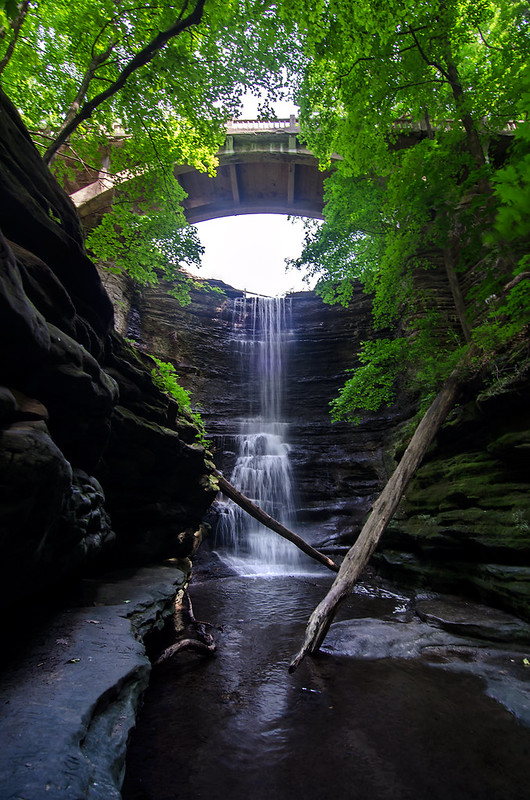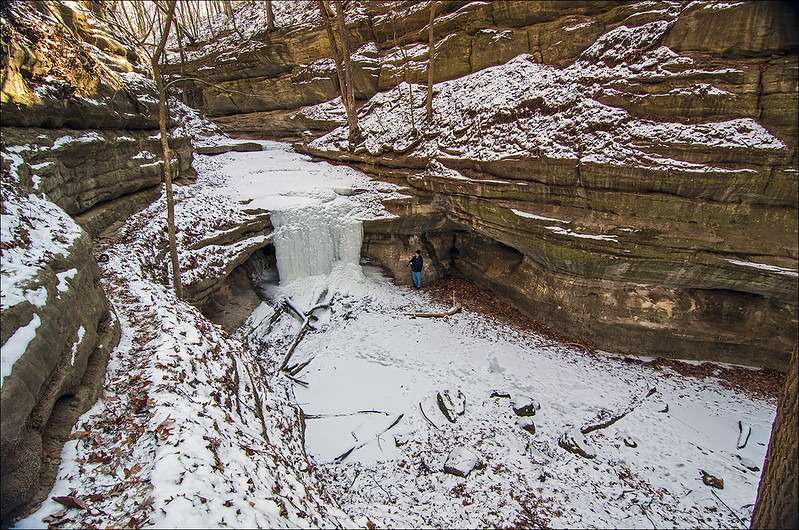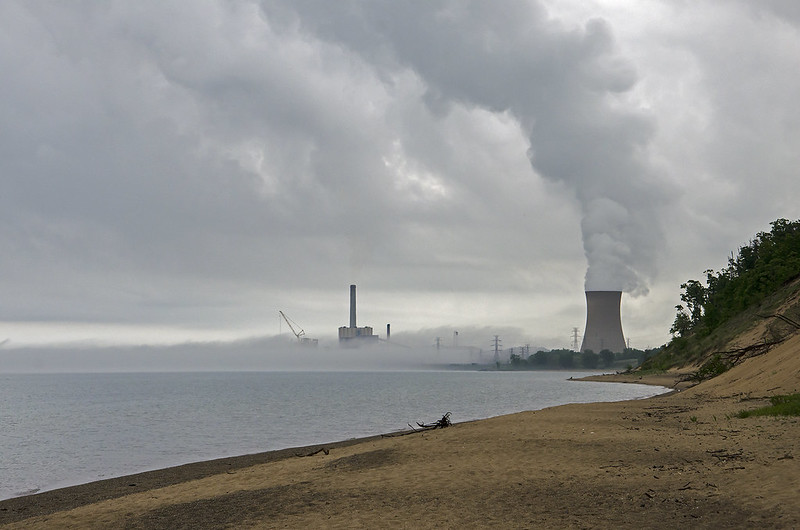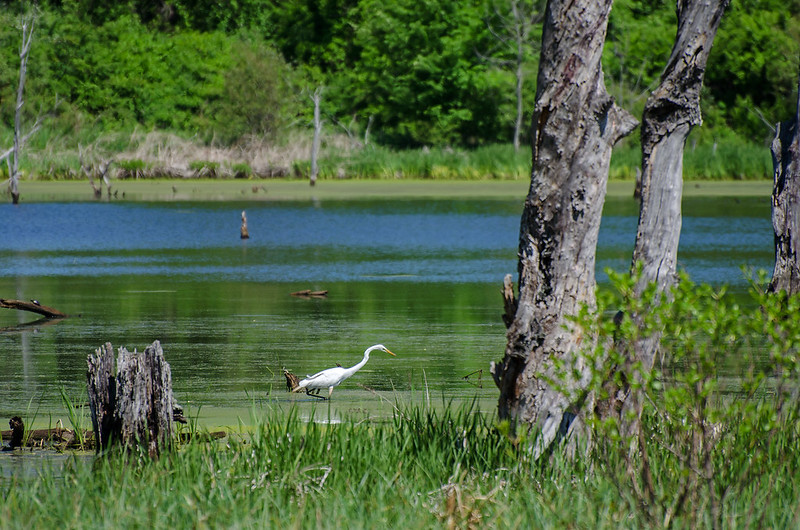
Early morning at the bottom of the canyon was quite dark, even though the sun illuminated the falls and the trees some 30 feet above us. We spent the morning following trails we normally don't explore, and encountered some interesting new landscapes, but we came back to visit one of our favorite waterfalls.
At around 30 feet, Lake Falls, is the tallest waterfall in Matthiessen State Park, and one of the most popular. It's relatively easy to view from the trail above, or the bottom of the canyon, but if you wish to get close to it, you'll probably get your feet wet. If you know where to park, this waterfall is only a few steps away from your car - great for freezing cold days when you wish to view the frozen waterfall but don't want to hike in the cold. The best way to experience this fall is to hike in along the stream from the main parking lot. You'll experience a few other waterfalls, and wander through plenty of moss covered canyon.
























